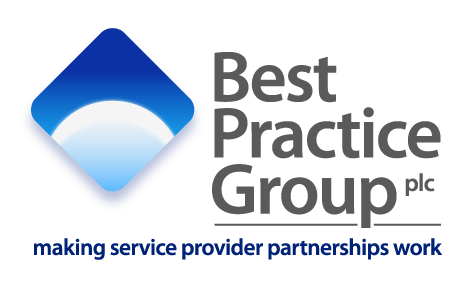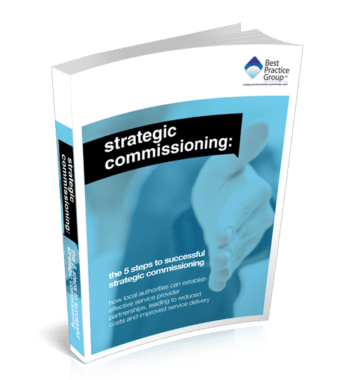 It has never been more important for your project to have a robust, tried and tested procurement strategy that you can rely on. Agreement on a roadmap for the way you conduct your procurement project is essential to ensure all involved understand their role in the process and are working towards common goals.
It has never been more important for your project to have a robust, tried and tested procurement strategy that you can rely on. Agreement on a roadmap for the way you conduct your procurement project is essential to ensure all involved understand their role in the process and are working towards common goals.
Do you have a clear, understood and consistently followed procurement strategy in your organisation?
What’s a procurement strategy and why do you need one?
A procurement strategy details how a business should deal with its purchasing activity to ensure it meets its business objectives. It identifies the end goal and provides an overview of all the steps involved to get there and the resources needed to do it. We have seen so many examples of procurement strategies that are no more than a procurement route analysis, but best practice dictates that it should be so much more than this.
With years of experience working with organisations to create or repair their strategic relationships, we know that the procurement phase is the most important of all as it sets the tone for the rest of your relationship.
The benefits of a considered procurement strategy include:
- Reduced risk of poor procurement decisions
- Greater likelihood that all your business needs will be met (through a fit for purpose solution)
- Increased chance of getting the best value for your money
- A more efficient, transparent and fully auditable procurement process
- An agreed team strategy that everyone understands and can deliver on
- Assurance to internal senior stakeholders that there is a robust strategy in place to ensure a fit for purpose solution is contracted for.
What should a procurement strategy contain?
A procurement strategy should be tailored to the specific needs of the organisation or project and despite each one having its own unique set of requirements, as a basic outline, an effective procurement strategy should include:
- Introduction and background to the organisational/project/programme objectives/outcomes
- Procurement scope
- Alignment to required outcomes
- Details of the needs of multiple stakeholders
- Key procurement principles, risks and mitigations
- Lessons learned from past procurements
- Insights from and/or plans for further Early Market Engagement
- Procurement route options appraisal (and preferred option recommendation)
- Procurement process and plan
- Supplier evaluation and selection criteria/process
- Influencing factors that will impact/accelerate the procurement process
- Resource requirements
- Contracting strategy* (early contract terms and KPIs).
A procurement strategy should not be fixed in stone – it is important to subject it to regular reviews to ensure that it continues to meet the needs of the organisation. Changes in the business landscape or changes in the products or services offered by suppliers can all impact how your procurement strategy should be structured or the ways in which it must be adapted.
*Your procurement strategy should contain a contracting strategy. When advising our clients, we usually deliver the two together. This provides assurance to internal senior stakeholders of a robust strategy that you will contract with a fit for purpose supplier and solution that achieves your business outcomes, plus an agreed team strategy that everyone understands and can deliver upon, safely. Click here for more information.
Creating and executing your procurement strategy
Creating a successful procurement strategy can be challenging, but careful planning and clear communication will facilitate the process.
One of the first and most important steps is to make sure that you are aware of all the regulations and rules that apply (e.g. for the public sector tender process). Make sure that everyone involved in the process knows what their role is, so that there are no misunderstandings when it comes to purchasing decisions.
Before being able to create your procurement strategy, it’s important to take some time to consult with stakeholders and consider all the business needs, what you are looking for in a supplier, and what factors are important to your organisation (and individual stakeholders) when buying the required products or services. This will help you define your evaluation criteria and the selection process.
Early Market Engagement is another important step in information gathering and in itself can go some way to help to determine the nature of your procurement strategy by illuminating what suitable solutions are available in the market, what procurement route may be most appropriate, and any potential points for negotiation that may be required further along the process.
A variety of factors must be taken into consideration before making a purchasing decision, including the potential risks involved and whether the supplier will be able to meet all your business needs. It can be tempting for a business to make its choice based on price alone; however, a procurement strategy should be far more nuanced than this in order to achieve best value. Having robust processes in place to guide you to carefully consider your options before making any purchase decisions will pay off in the long run. A procurement strategy can help with this by outlining all the steps involved and ensuring the right research is carried out, that communication plans keep all stakeholders informed and engaged, and that evaluations focus on what is most important to your organisation.
Four important factors to include in your procurement strategy to offer maximum value
In addition to the advice provided above, the four factors below are, in our view, too important not to include in your procurement strategy.
Factor 1: Clearly define your ‘what’ and leave the ‘how’ to your chosen experts
Ensure your procurement strategy clearly defines what it is you are trying to achieve – so that includes the reason for change and overarching business outcomes and objectives that you would like to achieve once the solution is in place. You do not need to outline the ‘how’ as this is the job of the suppliers/bidders as experts in their field. If your organisation is agreed on this point, it makes the requirements gathering exercise slightly easier (focusing on the outcomes and outputs rather than inputs) but it also ensures that the balance of risk is in the right place between you and your suppliers.
Factor 2: Reduce the risk of challenge
Opportunistic legal action is a very real challenge and one which could cause delay and significant costs to your project as an often complicated web of claim and counterclaim is unravelled. If even the slightest possibility of favouritism or unfairness in the tendering process is believed, then nerves will rapidly become frayed and an official complaint could be filed faster than you can blink. The projects we are talking about can be worth many millions of pounds and, therefore, a disgruntled supplier may fight hard for its rights.
The best way to avoid such an eventuality is to clearly think about how you are going to treat all suppliers fairly and equally and make it as clear as possible to bidders that this is what you are doing. Involving those tendering for your business in the procurement process to create a feeling of inclusion may go some way to counter any perception of preferential treatment.
Clearly set out in a written document how you would like all tenders to be completed and submitted and explain precisely how you will be reviewing them along with time frames and expectations, then get each of those tendering organisations to sign-off on what you have set out.
This way, as long as you stick strictly to the procurement process you have laid out, nobody can legitimately claim they were not informed or that one was given greater knowledge than another. Clarity, detail and consistency are all vital here.
Factor 3: Design bidder response template and evaluation framework
Using your procurement strategy to think ahead to how you are going to compare bidder responses on a like-for-like basis to ensure your evaluation is not only fair, but achieves the best results is a good use of time. In Factor 1 above, we told you to identify the ‘what’ and now you want to your bidders to indicate exactly how they are going to achieve it. The only way to do this is to provide a clear response template with instructions on how to complete it.
You will also need to identify the process for evaluating tenders in a manner that is as objective and auditable as possible. While it might be too early at the procurement strategy phase to identify all the evaluation criteria, you can certainly use this time to agree on the major factors that are important to the business. Is price or quality more important to you? Are there any other factors, such as a deadline date, which will mean that speed and urgency are just as important?
While the specific evaluation matrix you use will differ for each project, as what you are looking for from the vendor will vary, the fundamental elements of your evaluation framework should remain the same, to determine and agree:
- What you are most interested in evaluating (your evaluation criteria)
- How important each criterion is and how it should be weighted in the framework.
Essentially, the evaluation framework is a long list of criteria that you’re looking for with their percentage weighting in the calculation noted next to them.
Your procurement strategy should make it clear that the process of developing the right evaluation framework should be arduous. If this sounds harsh, it is supposed to be as this is one of the most important things you’ll do to determine which supplier is best suited to your needs and, therefore, the precise mix of evidenced experience, expertise and capacity is vital. Corners should not be cut here and a great deal of consideration needs to go into both asking the right questions of all stakeholders at your end to determine what your expectations are and having the right in-house or external experts determining what is realistic to expect from those in the procurement process.
This evaluation framework (a ‘must’ for the public sector) should be included in the procurement documentation you issue.
Factor 4: Build ‘expert advice’ into your contractual agreements
The concept is simple — you must elevate your vendor as an ‘expert supplier’ and contract with them for expert advice in the pre-contract stage (if, in the public sector, your procurement process allows this). If this is not possible then you must make the execution of the contract contingent upon successful expert due diligence. The thinking behind this is threefold:
- By contracting with your provider as an expert you are far better protected from any future contractual issues
- Going through this process ensures that there is a deep dialogue between client and vendor before the client has to commit
- By expressly binding the vendor’s expert advice into the contract of supply, you gain extensive protection against the vendor failing to perform the contract properly
By failing to prepare you are preparing to fail
It may be an old adage, but it’s no less true today in this context than it was when it was first coined.
While creating a robust procurement strategy may feel like it is wasted time in what is likely to be an already tight timescale, it will pay dividends later on in your procurement process, during implementation, and throughout your strategic partner relationships.
If you need help with any element of your procurement or contracting strategy, you can find more information on BPG’s services page here or please get in touch for any specific questions you have.

